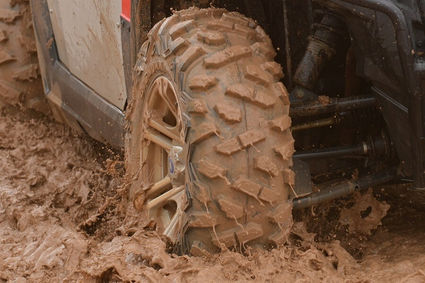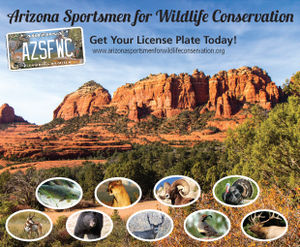Don't Go Mudding On Your OHV
Do your part to protect Arizona's habitat and be extremely careful during monsoon storms.
September 1, 2018
Operate Responsibly; Don't Go Mudding On Your OHV
While it may be tempting to go out on an off-highway vehicle (OHV) after a rainstorm when the temperature is cooler and the ground is fresh, doing so can cause long-lasting damage to the habitat. The Arizona Game and Fish Department (AZGFD) advises that OHV operators turn around if they encounter wet and muddy roads.
While the practice of "mudding" - purposefully driving through wet areas, whether it's a meadow, lakeshore or water tank for wildlife or ranchers' animals - may be touted as fun on places like social media, it can cause long-lasting damage to the habitat and forest roads.
In addition, when an area is wet, riding can tear up the roads and trails making them impassable for others. Even a lighter-weight OHV with low-pressure tires can cause lasting damage to an area.
According to the U.S. Forest Service, mudding has many negative impacts:
• Rips up native plants - When plants are gone soil washes into nearby streams and lakes, and it creates the opportunity for noxious weeds to move in.
• Compacts soil - Tire tracks create hard soil that keeps water from moving into the ground, and they make it difficult for plants to grow.
• Harms wildlife - When vehicles tear up meadows and wetlands, it removes nesting and hiding cover, interferes with feeding, and may push animals out into areas where they may not survive.
• Smothers fish - Many species of fish and amphibians use gravel to build nests and bury their eggs. Driving through streams destroys these gravel areas.
• It's also a safety issue for riders. OHVs handle differently on wet roads than they do on dry ground, so use caution and drive at slower speeds when roads and trails are wet.
If you see someone mudding, call 1-800-VANDALS. It's helpful if you can get a license plate number and description of both the OHV and the operator as well as a location of the activity so law enforcement personnel can follow up on the information.
Monsoon Storms Are Unpredictable
While monsoon season officially began June 15, the first major storms hit the Phoenix area in August and served as an important reminder for off-highway vehicle (OHV) operators to monitor the weather forecast and be prepared for changing conditions.
The severity of monsoon storms varies greatly, from a minor dust storm to a violent thunderstorm capable of producing hail, lightning and/or flash flooding. These weather conditions can greatly impact how OHV operators must maneuver their machines and require everyone to know how to ride safely and appropriately depending on current conditions.
"Always check the forecast before heading out, and if severe weather or storms are likely, the best thing to do is postpone your outing for another day," said David Rigo, OHV law enforcement program coordinator for the Arizona Game and Fish Department. "However, if you're already out and storms begin appearing nearby, there are key actions you can take to stay safe."
The Arizona Game and Fish Department encourages OHV enthusiasts to take note of the following tips to stay safe during monsoon season:
• Always wear proper safety gear, including a helmet (required for those under 18), eye protection, long sleeves, pants, over-the-ankle boots and gloves.
• Seek shelter indoors as storms are developing or are nearby.
• Never cross running water. While it may look shallow, the water may be deep enough that it could push the vehicle downstream, or you may get stuck in loose sediment.
• Drive slowly in order to not lose control on muddied trails.
• To avoid being struck by lightning, avoid open fields, high land, trees, poles or other tall objects and standing bodies of water.
• Be aware of and avoid flash-flood zones.
While it may be tempting to go out on an OHV after a rainstorm, the department advises against operating on wet or muddy roads. When the area is wet, riding can tear up the roads and trails making them impassable for others. In addition, OHVs can do serious damage to meadows, streams and other areas important to wildlife and Arizona's water supply.
Always stay on roads and trails, and remember that even a lighter-weight OHV with low-pressure tires can do lasting damage.
For more information on responsible OHV use or to sign up for a safety education course, visit azgfd.gov/OHV.
There are a lot more OHV stories at http://www.westernoutdoortimes.com/search/ohv .














Reader Comments(0)